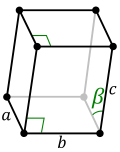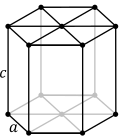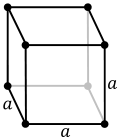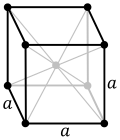Eudiometry:- Eudiometry means gas analysis. It means in this type of
numericals either you have to find out vol. of GAS From the data given in
question or you have to find out any other thing like molecular formula of
hydrocarbon ,no. of mole , mass of any other reactant and vol. of GAS is given.
Specific gases are absorbed in specific reagents as given below
Reactants Absorbed gases
KOH
solution
CO2 & SO2
Alkaline
Pyrogallol O2
Solution of ammonical
cuprous chloride CO
And if the mixture is
cooled, H2O vapour changes to liquid.
Hence, when
temperature is above 100 0C (373 K) then only volume of H2O
is considered.
Eudiometry is mainly
based on Avogadro's law,
A (g) + B (g) →
C(g) + D(g)
a
volume b volume c volume d volume
a
moles b moles c
moles d moles
Q.1 Three moles of Na2CO3
is reacted with 6 moles of HCl solution. Find out
the volume of CO2
gas produced at STP
Sol. Na2CO3→
NaCl + CO2
Apply POAC on C atom
No. of moles of C atoms in Na2CO3
= no. of moles of C atoms in CO2
1* no. of moles of Na2CO3 = 1*
no. of moles of CO2
So no. of moles of Na2CO3 =
no. of moles of CO2 = 3 moles (given)
Vol. of CO2 = 3 * 22.4 litre = 67.2 litre
v HOW
TO FIND OUT MOLECULAR FORMULA OF ANY HYDROCARBON USING POAC:-
Q. 10 ml. of a gaseous
hydrocarbon was burnt completely in 80 ml. of O2
at NTP. The remaining gas occupied 70 ml. at
NTP. This vol. became 50
ml on treatment
with KOH solution. What is the formula of hydrocarbon?
Solution: - Cx Hy + O2 →
CO2+ H2O
Vol. of ( CO2 + unreacted O2)
= 70 ml.
Because CO2 can be absorbed by KOH . So when this 70 ml. mix. Is treated it
becames 50 ml it means vol. of CO2 in the mixture was 20 ml. which
is absorbed
by KOH and remaining 50 ml. was unreacted O2 ( O2 can NOT absorbed by
KOH)
So vol. of CO2
= 20 ml.
Vol. of O2 reacted = 80 -50 = 30
ml.
Vol. of hydrocarbon =
10 ml.
Apply POAC on C atoms
X* no. of mole of Cx
Hy = 1* no. of mole of CO2
-----------------------( i
)
X* 10 = 20
So X = 20/10= 2
Apply POAC on H atoms
Y* no. of moles of Cx
Hy = 2* no. of mole of H2O -----------------( ii )
Apply POAC on O atoms
2* no. of moles of O2
= 1* no. of mole of H2O+2* no. of mole of CO2
From eq. (ii)
2* no. of moles of O2
= y/2* no. of mole of Cx Hy + 2* no. of mole of CO2
2*30 = Y/2*10 + 2 *20
20 = 10Y/2
Y = 4
Put the value of X and
Y in Cx Hy
The molecular formula of
hydrocarbon is C2H4
TRY TO SOLVE FOLLOWING QUESTION
Q.2 7.5 ml of hydrocarbon gas was exploded with
excess of oxygen. On
cooling it was found to have undergone a contraction of 15
ml. if vapour
density of hydrocarbon is 14. Determine its molecular formula.
Solution
( HINT ) :- molecular wt.= 2* vapour density
Answer:- C2H4
Q.3 7.5 ml of hydrocarbon gas was exploded with
36 ml.of oxygen. The
vol. of gases on cooling was found to be 28.5 ml., 15 ml.
of which was
absorbed by KOH and the rest was absorbed in a solution of
alkaline
pyrogallol. If all vol. are measured under the same conditions,
determine
the molecular formula of hydrocarbon.
Answer:- C2H4
















